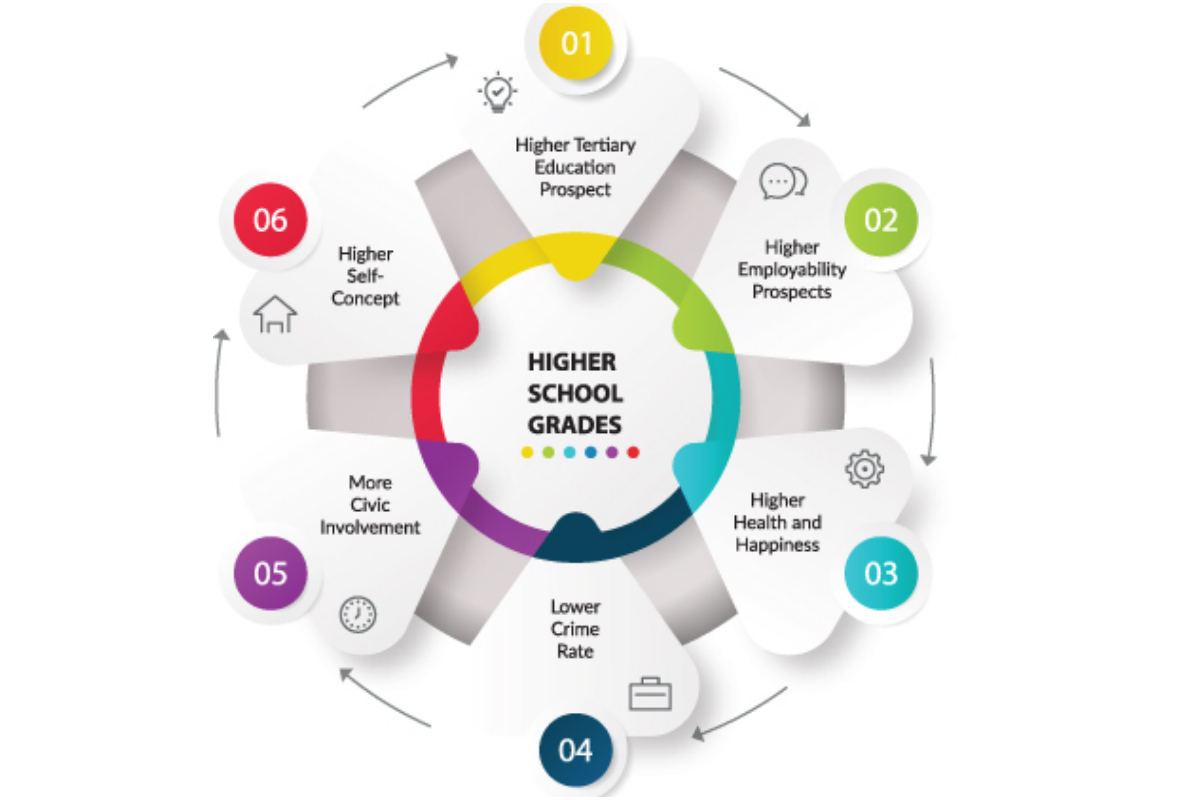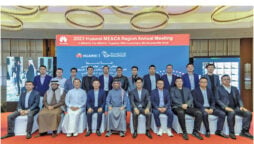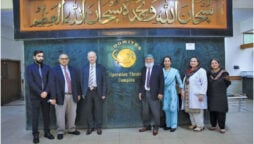
Parallel Education Streams in Public Sector
KARACHI: The provision of effective public education is one of the most challenging tasks in the public good provision domain. Since 1947, more than 23 education policies and five-year plans have been presented by successive governments in Pakistan. However, our education system is still facing multifold issues such as ineffective management and supervision protocols, poor examination systems, etc, said Muhammad Jehangir Khan in a report of the Pakistan Institute of Development Economics.
Without any doubt, the public education provision is one of the core investments that a state can make to enhance human capital and wellbeing. But the aspect that makes the public education provision tricky is the associated cost and benefits to the public of competing investment programmes in the public sector.
When we look at Pakistan’s public education funding from elementary to intermediate levels, we can notice that, in a broader sense, the public education funding follows two streams.
The first and the major stream is general public schools and colleges. The second and relatively smaller stream is the cadet colleges, PAF colleges, etc.
Investing in public education is a necessary but not sufficient to gain desirable education outcomes. The policymakers are usually interested in how educational expenditures are targeted and what outcomes (benefits) can be realistically linked with that funding.
With this idea in mind, in this research, we conducted a comparative cost-benefit analysis of the aforementioned two mainstreams of education to assess the cost associated with each stream and the benefits they provide to the public.
We also assessed the delivery approach of both streams for lesson learning and system strengthening. To address these questions, this study adopted a mix-method approach (both quantitative and qualitative methods).
By delivery approach, we mean the process of getting things done or the chain process beginning from goal setting to implementation and effects on student learning.
We have tried to assess the working mechanisms of both streams, particularly in the context of 21st Century skills. Research shows that our education system is plagued with various issues such as discontinuity in the government policies, weak supervisory and monitoring mechanisms, poor examination systems, political intervention, higher dropout rates, etc. All these issues somehow are linked with the delivery mechanisms of the public education provision.
Across the world, the countries adhere to ambitious goals and reforms to enhance the quality of service delivery, including education. These ambitious goals and reforms require actionable strategies and effective transmission through a complex and multisided bureaucratic system to get delivered on the ground but this delivery process can be challenging in the presence of the potential bureaucratic inertia, as well as the complexity, coordination, discretion, and innovation required to achieve systemic change.
Therefore, the question that how to enhance mechanisms of bureaucratic functioning and policy delivery has become one of the key challenges for the governments around the globe. Therefore, a general understanding of the delivery mechanisms of both education streams is important to see the efficiency of each stream in achieving their respective goals.
Our findings show that the per-student cost to the government, from FY18/19 to FY20/21, in the Islamabad Model Colleges (IMCs) was Rs1,963.90 higher than the cadet colleges. Likewise, on an annual basis, a student in IMCs was getting Rs654.63 more than a student in the cadet colleges.
Contrary to the common narrative that the cadet colleges get more funding from the government, our analysis showed that the funding to the IMCs was higher than the cadet colleges.
We undertook the cost-benefit analysis of both education streams from three different perspectives, i.e., CBA based on the cost to the government, CBA-based on the cost to government and the private cost and CBA based on the cost to the government, private cost and the opportunity cost.
The CBA based on the cost to the government for IMCs shows that the benefit cost ratio (BCR) was equal to 3.33, which implies that per unit of rupee that had been invested by the government over 2018/21will generate Rs3.33 for the economy.
The CBA based on the government cost plus private cost reduced the BCR to 3.26, which implies that the IMCs will generate net benefits equal to Rs3.26 in the future.
Finally, the CBA based on the government, private and opportunity costs reduced the BCR to 1.40, which implies that the IMCs still produce positive net benefits considering all three types of costs.
The CBA of the cadet colleges, considering the government funds only, shows that the BCR was 7.92, which indicates that each rupee that had been invested by the government over 2018/21 is expected to produce Rs7.92 for the economy in the long run.
The CBA of the cadet colleges considering the government plus private costs shows that the BCR decreased to 2.26. Nevertheless, the investment remained profitable, as the CBR value was greater than two units against each unit invested.
Lastly, the CBA based on the government, private and opportunity costs shows that the BCR reduced to 1.27 of the cadet colleges. However, the investment was still profitable, as the BCR was still greater than one.
Here, it is important to note that in this particular CBA, we relied on private benefits instead of social benefits, which implies that the benefits reported here might be understated. From a fiscal point of view, without considering the private and opportunity costs, the return on investments in the cadet colleges was considerably higher, compared with the IMCs.
In a simple pooled regression analysis, the results indicate that in the cadet colleges the GPA was 1.75 higher, compared to the IMCs. This implies that the performance of the cadet colleges was better in terms of producing good academic scores, compared with the IMCs.
In the literature, good academic performance is significantly associated with various positive life outcomes such as an increase in tertiary education prospects, health, happiness, civic involvement, higher self-concept, reduction in crime rate, etc. Therefore, it could be argued that the cadet colleges contribute more to social wellbeing, compared to the IMCs.
When it comes to the delivery approach, the IMCs are linked with a relatively long administrative and supervisory chain that involves multiple departments along with a large number of agents. This larger chain makes the system prone to delivery inertia and bureaucratic pathology.
For instance, the inadequacy of enablers or ambiguity in the roles and the ownership of responsibility makes things more complicated. Besides, the administrative hierarchy of the cadet colleges is relatively shorter, as it starts with the board of governors and goes straight down to the principal, vice principal levels, etc.
In terms of goal setting, both streams set their goals in alignment with the national education policy and plan. For the IMCs, the Federal Directorate of Education (FDE) is responsible for narrowing down the national education goals to formulate strategic goals and coordinate them with the area education offices (AEOs).
The AEOs then define the tactical goals for the IMCs. In the case of cadet colleges, the board of governors decides strategic goals in the light of the national policy.
During the board meetings, they also decide on the tactical goals according to the institutional mission. Finally, their execution rests with the principal and other school-level officials.
Our findings show that the delivery approach of the cadet colleges is relatively better than the delivery approach of the IMCs.
The cadet colleges are prototypical examples of institutional autonomy and decentralised governance in the education sector. The ordinance passed in 1960 gives an ample amount of autonomy to the cadet colleges to work under a governing body within specified constitutional boundaries. Hence, they are more adaptive, flexible, experimental and innovative and think out of the box.
Despite getting lower funds from the government in comparison with the IMCs the cadet colleges are accumulating higher resources by shifting the cost burden to alumni, students and other trustees.
The cadet colleges do relatively better in terms of the 21st Century learning and kills delivery, engage and utilise its alumni to gain tangible and intangible support in terms of mentoring, etc, possess better enablers, have better teacher training and are more oriented towards the holistic development of the students.
Despite being better on many fronts, the delivery approach of the cadet colleges manifests some weaknesses, as well. These include higher private costs, heavily-enforced control and punishment mechanisms. Moreover, their delivery approach is relatively opaque data-wise and has a tendency to create cultural shocks for the students due to the weaknesses in the transition mechanisms.
Finally, all the cadet colleges are working for the same goals but independently without any formal horizontal integration mechanisms and a unifying central body.
In addition, the major weaknesses in the delivery approach of the IMCs include higher costs to the government, comparatively lagging in the 21st Century learning and skills, poor teacher training mechanisms and bureaucratic pathology, affecting their smooth functioning and educational outcomes.
The lower living standards and deficiency of staff at several institutes are some of the other weaknesses of the system.
There are some positive aspects of the delivery approach of the IMCs, as well. For instance, most recently the FOE has taken some admirable steps to strengthen its delivery approach, such as the transformation of its data and monitoring system through initiatives, which include the Human Resource Management Information System (HRMIS).
The HRMIS is relatively better in data transparency, offers minimal private cost to the public, offers better accessibility and is socially inclusive.
In addition, the FOE is currently focusing on launching new steps like STEM and blended learning initiatives. This shows their resolve to improve the delivery approach of the general stream of public education through these most warranted initiatives.
Catch all the Economic Pulse News, Breaking News Event and Latest News Updates on The BOL News
Download The BOL News App to get the Daily News Update & Live News.








 Read the complete story text.
Read the complete story text. Listen to audio of the story.
Listen to audio of the story.